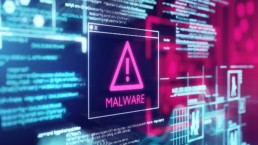The Top Three Reasons You Need Compliance as a Service
Compliance as a Service (CaaS) is an easy way to ensure you’re adhering to the government’s constantly changing regulations without all the fuss of handling things in-house. Staying HIPAA and PCI compliant is one of the most important things you can do to protect your business from violating these non-negotiable rules and suffering the related consequences—but it isn’t easy. It’s going to require more than just an encrypted password and a 2-step authentication to get the job done.
Getting CaaS will relieve you of this burden by providing a managed service that monitors everything to keep things stored safely so you can stay focused on your primary business goals. With a team of IT experts on your side, you won’t have to worry as much about whether your business is maintaining compliance. You’ll know it is.
Contact us to discover how CaaS helps organizations like yours stay compliant without all of the headaches.
“Without the support of a CaaS provider, many businesses spend excessive time researching regulation changes, managing data security and preparing documentation for regulatory bodies. CaaS can help keep this work to a minimum.” -Consolidated Technologies, Inc.
What Are the Top Three Reasons to Get Compliance as a Service?
1. Save Valuable Time: Keeping up with the latest regulations can really eat into your day. With CaaS, you are outsourcing not only a lot of time-consuming work, but also all of the in-house headaches that come with staying compliant. Spend less time learning about how regulations are shifting and devote more of your energy to delivering the excellent customer service that your clients and patients have come to expect from your brand.
2. Protect Sensitive Information: Improve cybersecurity and minimize digital risk with CaaS. IT will reduce your legitimate concerns about staying compliant and maintaining data privacy. CaaS allows industry experts to help you avoid data breaches through regular IT audits that identify vulnerabilities and make the appropriate corrections before it’s too late. Plus, careful monitoring means that providers can quickly address any issues that may arise.
3. Enjoy Automatic Updates: Everyone knows that staying current with such a dynamic federal program is one of the trickiest parts of maintaining compliance, which is another reason why CaaS is such a valuable service. With automatic updates, you’ll be able to rest assured that everything is up to date regarding the latest changes to industry-specific regulations.
Now that you understand the importance of Compliance as a Service, it’s time to get down to business and start taking advantage of its benefits. Securing CaaS is one of the best ways to simplify everything related to compliance, and we’re here to help you get started today. Our team of experts is on standby to alleviate compliance-related stress and address any of your concerns about ever-changing regulations. Contact us today to learn more.
3 Bonus Benefits of a Disaster Recovery Plan
What would you do if you encountered a fire, flood, ransomware, data breach, accidental file deletion or really, any disaster? Your entire systems could crash, your data could be compromised, and your employees and customers would be looking to you for answers. Creating a comprehensive disaster recovery plan (DRP) ensures you can answer those questions and give your people confidence. Smart businesses understand the importance of a disaster recovery plan and how it can keep your organization running in the event of any disaster, but strategic businesses realize the additional value that a disaster recovery plan offers. Learn three strategic benefits of disaster recovery that will set your company apart from your competition.
Discover more benefits of disaster recovery. Contact us today.
Benefits of a Comprehensive Disaster Recovery Plan
- Cost-Efficiencies and Savings – One of the most significant benefits of a DRP is the long-term cost savings. A successful DRP includes preventative measures to reduce the risk of man-made disasters, detective processes to spot unwanted activity and corrective actions to quickly restore lost data and resume business as usual even after a disaster occurs.
- Maximized Employee Productivity – Executing a successful DRP is often dependent on having the right people in a position to lead during a disaster. With specific roles and responsibilities assigned in advance, you’ll be able to act quickly to increase effectiveness and productivity. Your employees will also feel a sense of security knowing leadership has everything under control.
- Greater Customer Retention – Your clients expect a lot from you, and in today’s world of competition, they’re not quick to forgive in the case of failure or downtime. If you’re unable to meet customer expectations, they can simply take their business to your competitor. A disaster recovery plan allows you to maintain your customer service quality, regardless if you’re faced with an unpredictable event.
The first step to gaining these additional benefits is making sure you have a proper disaster recovery plan in place. Our experts can get you started with a comprehensive DRP. We’ll work with you to fully understand your needs and develop a unique plan that can keep your business running no matter what the future has planned for you. Contact us today to learn more.
Data Backup Essentials: A COVID-19 Checklist
Businesses around the world are reexamining their business continuity plans in the wake of COVID-19, and that includes checking in on your organization’s policies surrounding data backup essentials. While you probably have methods for preventing data loss due to human error, system malfunctions or cybercrimes, you may not have been as prepared to protect your information during a pandemic. The need for sound data backup strategies has never been more apparent. Take a minute to go through our checklist of three ways to keep your data safe during the COVID-19 crisis.
Take advantage of the latest in data backup solutions. Contact us today.
Prevent Data Loss with the COVID-19 Backup Checklist:
Become Proactive About Data Backup Essentials
By now, your business has likely experienced some unfortunate disruptions due to the current pandemic. Between paying the bills, making payroll and keeping your clients satisfied, it’s easy to overlook the current state of your IT infrastructure. But neglecting to do so could be costly. There has never been a worse time to lose valuable data due to something as simple as human error. Think about the data your company couldn’t survive without, and make sure you’re doing everything you can to protect it by performing both automatic and manual data backups.
Educate Your Employees
When your workforce went remote, part of your company went home with them. During the COVID-19 crisis, many people are using technology in their homes in new and innovative ways. As they explore new programs and experiment with different set-ups, some of your employees may prove less experienced at handling data than others. Begin by identifying what your team members already know about backup solutions—and then ask them what they’re doing at home to ensure that data is not lost or stolen on their watch. Now is an excellent opportunity to go over best practices for data backup and recovery both inside the office and at home.
Identify and Rectify System Vulnerabilities
As more businesses undergo digital transformations, brick-and-mortar establishments are putting more data online than ever before. If your brand is facing virtual threats that you never anticipated, it can be easy to focus entirely on improving cybersecurity—and to forget about something as simple as performing routine backups as a result. Don’t let that happen to you during the pandemic. Do some investigating and see what you uncover and remember to repeat the process frequently. Backing up your data in more than one place is easier than it sounds—just make sure you’re doing it.
Protect Your Good Reputation
Yes, losing your data is a nightmare from a logistical standpoint. But losing your hard-earned reputation? That’s hard to recover from, especially during a tough economic crisis like the one presented to us by COVID-19. With clients threatening to cancel contracts and budgets shrinking by the minute, it’s more important than ever to back up your organization’s data and make sure you don’t suffer the consequence of its loss. Your customers entrusted you with private information, and its value to your bottom line cannot be underestimated. Don’t sacrifice that by forgetting to do something as easy as strengthening your current data backup solutions.
Preventing data loss should always be a top priority, but when so many team members are working from home during the COVID-19 crisis, backing up critical information has never been more important. Instituting best practices for data backup and recovery now will prevent you and your employees from dealing with additional IT headaches during these uncertain times. If you’re ready to learn more about data backup essentials or discuss how our other services might help your business weather the storm, please reach out today.
Three Major Ways COVID-19 Impacts Your Business
You don’t have to turn on your television to see the impact of COVID-19; simply go for a drive and you’ll see the “closed” sign in business windows. In light of COVID-19, companies everywhere are looking for ways to flip their closed sign back to open. The key is to understand how this situation impacts various aspects of your business, and to learn from it so you can bring in profit and ensure business continuity in the future.
What is the Impact to Your Customers?
When customers face a disaster or crisis, their priorities change. What was once important may no longer seem essential. Your customers will be more cautious about how they spend their money and will only maintain or seek out the necessities. It’s important to understand where your product or service lands on your customers’ list of priorities. If you are seen as essential, you need to make sure you’re able to continue to deliver for your customers. If not, take a look at your capabilities and see if there’s something you can reposition to help them through this tough time. Depending on the customer’s ability to buy, you’ll need to take into account the potential of having to scale back your resources to lower overall costs.
What is the Impact on Your Workforce?
In the wake of COVID-19, we’ve seen many businesses reallocate some or all of their staff to a mobile workforce. This would also be the case if your business was ever impacted by a fire, flood or any natural disaster that might displace your staff for an extended period of time. The key to a successful remote workforce is the ease of accessibility matched with security. Even before COVID-19, remote access was an accessible entry-point for cybercriminals. Business owners need to make sure they have the right technology in place to monitor remote access and keep out malicious users.
What is the Impact on Your Revenue Stream?
According to Gartner, the average cost of IT downtime is $5,600 a minute. How long can your systems be down until you reach an unrecoverable amount of revenue loss? In regards to COVID-19, businesses are facing tough numbers. Many are counting down to how long they can continue to pay their employees with their door closed, while others have seen a significant number of layoffs. The sooner a company can get back to work, the faster they can regain revenue and keep its people and business afloat.
The Impact of a Business Continuity Plan
Having a business continuity plan in place creates a safety net for business owners. It helps businesses get back to “normal” as quickly as possible in many different worst-case scenarios. It ensures you have the proper technology in place to maintain operations, keep your people productive and service your customers. If you’d like to learn more about how we can help you implement a business continuity plan, or discuss other services that can help you during tough times, please contact us.
Don’t Wait Until After an Attack to Protect Yourself
From uniformed employees to cybercriminals, your digital business is constantly being threatened. Are you prepared for when that threat becomes an attack? Having a watchful eye on your information and having a plan in place if you are comprised is at the heart of digital risk management.
Prepare today so you can grow tomorrow.
Is Digital Risk Management Right for Me?
Digital risk management is a protection plan made to fit your business. From early risk detection and training employees to an action plan if an attack occurs, your MSP will work with you to make sure you are ready for whatever happens. Hackers are not picky; according to Accenture, 68 percent of business leaders feel their cybersecurity risks are increasing. No matter how unique your business is, you are still at risk. Working with an MSP who can deliver digital risk management solutions is the best defense against evolving threats.
What Threats Should I Be Worried About?
Picture this; you’ve just fired an employee who feels you’ve wronged them in some way. They have the password and username to your most valuable client. Are you prepared for an attack if they were to give that information away? From disgruntled employees to ransomware attacks to skilled hackers, your evolving technology comes with evolving threats. We know how overwhelming this can feel, but there’s no need to panic. By having a digital risk management plan in place to detect threats early or to revive your business after an attack, you can worry less and grow more.
I’m A Small Company. Can I Afford This?
According to Verizon, 43 percent of breaches victims were small businesses. A digital risk management plan may seem like an unnecessary expense, but will you be able to afford to pay a million-dollar ransom for your information? And even if you get your information back, will you have enough money to rebuild? Although your MSP will work with you to build a plan within your budget that offers the best protection they can, know that investing in an excellent digital risk management plan can help you avoid losing money in the long run.
Let Us Help
Running a business means constantly juggling responsibilities. Let us take one off your plate. As your MSP partner, we’ll make sure your efforts stay focused on the continued growth of your business, not rebuilding it. Contact us today to create a plan for a worry-free tomorrow.
6 Steps to Regain Control During a Cyberattack
When faced with a cyberattack, the worst thing you can do is panic because time is of the essence. Your top priority now is limiting the damage by securing your unaffected data. On your worst day, it helps to have a technology service provider who can help guide you through this tough tech situation. Here are six steps you and your TSP can follow during a cyberattack to minimize damage and speed your recovery time.
Don’t wait until it’s too late. Protect your business from cyberattacks.
Step 1: Assess the Situation
Before sounding the alarm, you need to know if this is simply an error or the real thing. Once you know for sure, notify whoever within your organization that can determine what type of attack you’re dealing with and how to stop it.
Step 2: Contain the Breach
After determining that this isn’t a glitch, your next step is to protect your unaffected network by containing the breach. First, figure out which servers are compromised, then contain the breach by doing the following:
- Disconnecting from the internet
- Changing passwords
- Disabling remote access
- Installing any pending security upgrades or patches
It may seem easier to erase everything from an infected server, but containing it will allow you and your tech team to figure out who broke into your network, how they were able to do it and what you can do to prevent it from happening again.
Step 3: Get Your Backups Ready
If you have backup servers and data ready, now is an excellent time to use them. However, before you turn them on, have your IT team check to find out if the backups were also affected by the attack. Backup servers can keep your networking running while you continue trying to stop the breach.
If you don’t have backup servers, simply turning your main servers off and on again won’t help. Keep your main ones on, so you and your team can analyze the breach and stop it without shutting down your entire network.
Step 4: Notify the Authorities
While it may be tempting to think of a cyberattack as an internal problem, it’s not in your best interest to keep this under wraps. Notify your local police department to inform them that you’ve been hit with a cyberattack. Also, keep in mind that you may need to contact more government agencies or industry organizations, depending on the type of data compromised or the notification processes within your field.
Step 5: Don’t Pay the Ransom
If the hackers are demanding a ransom in exchange for giving back your data, don’t do it. There is no guarantee the hacker will honor his end of the deal after you’ve sent the money. According to CSO from IDG, about 45 percent of organizations pay at least one ransom when hit by ransomware attacks. Paying the ransom will only encourage more hackers to do this kind of attack in the future.
Step 6: Notify Your Clients
This can be one of the most challenging steps following an attack, as many companies can be reluctant to share their bad news. However, you must let your customers who had their information compromised know what happened. That way, they can start to take action to prevent further damage.
How We Can Help
The best time to prevent a cyberattack is to have a complete security solution in place before a hacker attempts to break in. Don’t wait until it’s too late, have our team of cybersecurity experts run a security audit and create a solution that protects your business from the cybercriminals of tomorrow.
Secure Your Data
Find out how we can keep your network safe from threats. Contact Us Today.
Don’t Fall for These 3 Ransomware Myths
As companies continue doing more online, business owners need to be on the lookout for hackers trying to steal your data. Over the last few years, ransomware has emerged as a popular way to extort businesses for money. While many business owners are aware of ransomware as a threat, many myths get mistaken as fact.
Believing these myths can leave your business vulnerable to a ransomware attack, or uncertain of what to do if the worst happens. Below, we broke down three common myths about ransomware to keep you in the know.
Myth 1: Cybercriminals Only Target Large Companies
Fact: While large companies are still prime targets for hackers, small to medium-sized businesses are also at risk of attack. According to Verizon’s 2019 Data Breach Investigations Report, 43 percent of breaches involved small businesses. Hackers know small businesses don’t have the same levels of security as enterprise corporations, which makes them easier targets.
Myth 2: A Firewall is All You Need to Protect Your Data from Ransomware
Fact: Firewalls are an essential security measure when protecting your infrastructure, but it shouldn’t be your only line of defense. Ransomware can attack your database from a variety of ways, and not all of them can be stopped with a firewall. If a phishing email slips through, or an employee clicks a bad link on an unsecured website, then the wrong people may get access to your precious data.
Myth 3: You Should Pay the Hacker to Get Your Data Back
Fact: Back in 2015, the FBI was caught in the middle of a controversy when one of its agents publicly admitted that the bureau was recommending ransomware victims pay the hackers to get their data back. Today, the FBI and cybersecurity consultants from Microsoft never encourage a ransomware victim to pay any form of ransom demand. They advise against doing so because there’s no guarantee the hacker will return the data after receiving the payment. Even if they do, the decryption key may contain additional viruses.
How We Can Help
The threat of a cybersecurity attack keeps many business owners up at night. Thankfully, you don’t have to protect your network alone. As your managed security provider, we’ll take the lead identifying any weaknesses within your system and make recommendations on how to strengthen your security. That way, you’ll have peace of mind while we protect your data. Give us a call today and let’s talk about how we can help.
Will These Tech Trends Take Off in 2020?
As 2019 makes its exit, everyone in the tech industry is starting to look ahead to what the future holds.
One of the best ways to protect your business while staying ahead of the competition is knowing which obstacles or innovations are coming. So, which tech trends will dominate 2020? Let’s look at some of the trends we think will become popular next year.
The Cloud Continues Gaining Acceptance
Over the last couple of years, businesses started moving away from purchasing expensive computer programs and on-site data storage models every couple of years in favor of cloud subscription services. More companies realize that the cloud is a better, faster, less expensive and more resilient solution for their needs. According to a 2018 IDG survey, 73 percent of companies have at least one application in the cloud and that number will increase in 2020.
Hackers Will Get Smarter
With more companies opting for the cloud—or hybrid cloud—to run more of their business, data security is of the utmost importance. Companies are starting to see the light that ransomware is a significant issue that can’t be ignored. While the cloud automatically updates with the latest security measures, that doesn’t mean hackers will stop trying to steal people’s data. There are many ways hackers can get into your network, including human error, so proper training and security are essential.
The Decline of Company Apps
How many apps do you have on your phone but hardly ever use? Companies may be moving away from the dedicated app model in favor of cloud-based progressive web apps. Progressive web apps are web pages that include features, such as push notifications, that can be accessed via standard browsers.
BYOD Will Be More Secure
Who wants to carry around two smartphones? As more millennial and Gen-Z employees join the workforce, there will be a higher demand to minimize the number of devices needed to get the job done. As mobile devices and tablets continue offering comparable features to desktop PCs, workers will want to do more from their personal devices. This push for the bring your own device (BYOD) model means mobile software security will be essential to accommodate this workplace trend.
Don’t Fall Behind
While we expect these trends to make a splash in 2020, there’s no guarantee of what the future holds. That’s why you have to be prepared for the unexpected. If your IT infrastructure is starting to show its age, then you’re opening your business up to threats. Get your IT ready for 2020. Contact us today to find a solution for your business.
Protect Your Business with 3 Gifts Ideas
The holidays are almost here and now is the time to start thinking about what you’re going to buy for the people closest to you. It’s also a good idea to think about the perfect gift for long-term business success.
Instead of buying the newest computer, smart speaker or tech gadgets for your business, how about getting something you’ll enjoy for many days to come — peace of mind. How do you do that? By protecting your business from cybersecurity attacks.
Companies of all sizes are doing more business electronically, which makes having the right security in place essential. Phishing and ransomware attacks are on the rise, and businesses need to protect themselves. According to Tech.Co, cyberattacks cost U.S. businesses $654 billion in 2018. So, how can you give your business peace of mind?
Here are three cybersecurity gifts to give your business this holiday season:
Two-Factor Authentication
Cracking passwords is a hacker’s way to try to gain access to your network. One way to beef up your security is by creating an extra layer of protection. Over the last few years, two-factor authentication has become the new standard in safety. With this security method, once you enter a program password, you’ll receive an email or text message with a code to verify that it’s you trying to get in. This means you’ll be alerted if someone is trying to break into your network.
Automated Offsite Backup
When thinking about data security, redundancy is a good thing. Keeping regular backups of your essential business data is important to prevent data loss. However, to keep your business safe, your data needs to be kept in at least two separate physical locations, including one away from your primary location. That way, if a phishing or ransomware attack ever compromises your primary server, you’ll still have access to your data and keep working.
New Software
Are you still using old software to run your business? If so, you may need an upgrade ASAP. Microsoft Server 2008, Windows 7 and other products are reaching their end of service in January 2020, whether you’re ready or not. When a piece of technology reaches the end of life, that means no more updates. This exposes outdated tech to vulnerabilities that hackers can exploit. If you’re still using any of the Microsoft products reaching EOL, then it’s time for an upgrade.
How We Can Help
While the burden of protecting customer’s data falls on your business, you don’t have to do it alone. Our team of cybersecurity experts can help select the right solutions to protect your business from bad actors. Contact us today to get peace of mind this holiday season.
The 4 Types of Data Breaches You Need to Know
If you were hit with a data breach, would you know?
It seems like a silly question, but companies take an average of more than 190 days to identify a data breach. Imagine the damage a hacker could inflict on your business in that time! Considering that the average data breach in the U.S. costs $7.91 million, it’s smart to know what you’re looking for, so you can quickly identify and contain the damage – minimizing the costs of lost data, lost productivity and noncompliance.
Here are the four major types of breaches you need to protect your business against:
RANSOMWARE
Ransomware attacks occur when a hacker takes your data hostage in exchange for a payment. This often means encrypting your data, so you can’t access or read it. For most businesses, this brings production to a standstill. Unfortunately, even paying the ransom may not resolve the situation. In 2018, 45 percent of U.S. companies that were hit by a ransomware attack paid the ransom, but only 26 percent of those companies had their files unlocked.
Ransomware can be delivered through email, malicious websites or social media messages, among other avenues. Even if your data is restored, assume that any sensitive data on the affected machines has been compromised.
MALWARE
Malware is a more general term that includes attacks like spyware and viruses. Malware is generally designed with the goal of stealing information from your systems in one way or another. Viruses can even spread between the computers on your network.
Unlike ransomware, which is usually detected right away, other forms of malware can cause months or years of damage before they’re detected. According to Verizon’s 2018 Breach Investigations report, 92 percent of malware is delivered by email.
PHISHING
One of the most common forms of email malware is phishing attacks. In a phishing attack, a victim receives an email that seems to come from a trusted sender. In generic attacks, this might be someone like UPS or Apple. The recipient clicks a link or downloads an attachment, unintentionally downloading a virus onto their system.
Some phishing attacks are even more targeted. They may appear to come from a source close to you, like your company’s leadership. This can be extremely difficult for your employees to recognize without proper security training.
DENIAL OF SERVICE (DOS)
A Denial of Service (DoS) attack is designed to shut down a machine or network, making it basically inaccessible. Attackers accomplish this in two ways. One is a flood attack, where attackers flood the target with more traffic than the server can handle, causing it to slow down and eventually stop. Hackers can also exploit vulnerabilities that cause a system to crash.
The goal is typically not to steal information, but to lock legitimate users, such as employees or customers, out of a system. You may have also heard news stories involving Distributed Denial of Service, or DDoS, attacks. DDoS attacks can cause more intensive damage, since the target is being attacked by multiple systems at multiple locations.
OTHER TYPES OF DATA BREACHES
Not every breach comes from a hacker – there are other types of data breaches to be on the lookout for. Employees may accidentally cause a breach by viewing data they’re not authorized to handle, or by leaving a laptop or other device where it can be lost or stolen. Employees or other internal personnel may also act maliciously by downloading, sharing or erasing data with the intention of causing harm to a company.
HOW WE CAN HELP
Data breaches are constantly evolving and becoming more dangerous, but you can tackle them with help from a trusted security partner. Our security solutions shield your business from a broad spectrum of cyberthreats while we educate your team on best practices to avoid data breaches. If you’re ready to take your data security seriously, contact us now.









